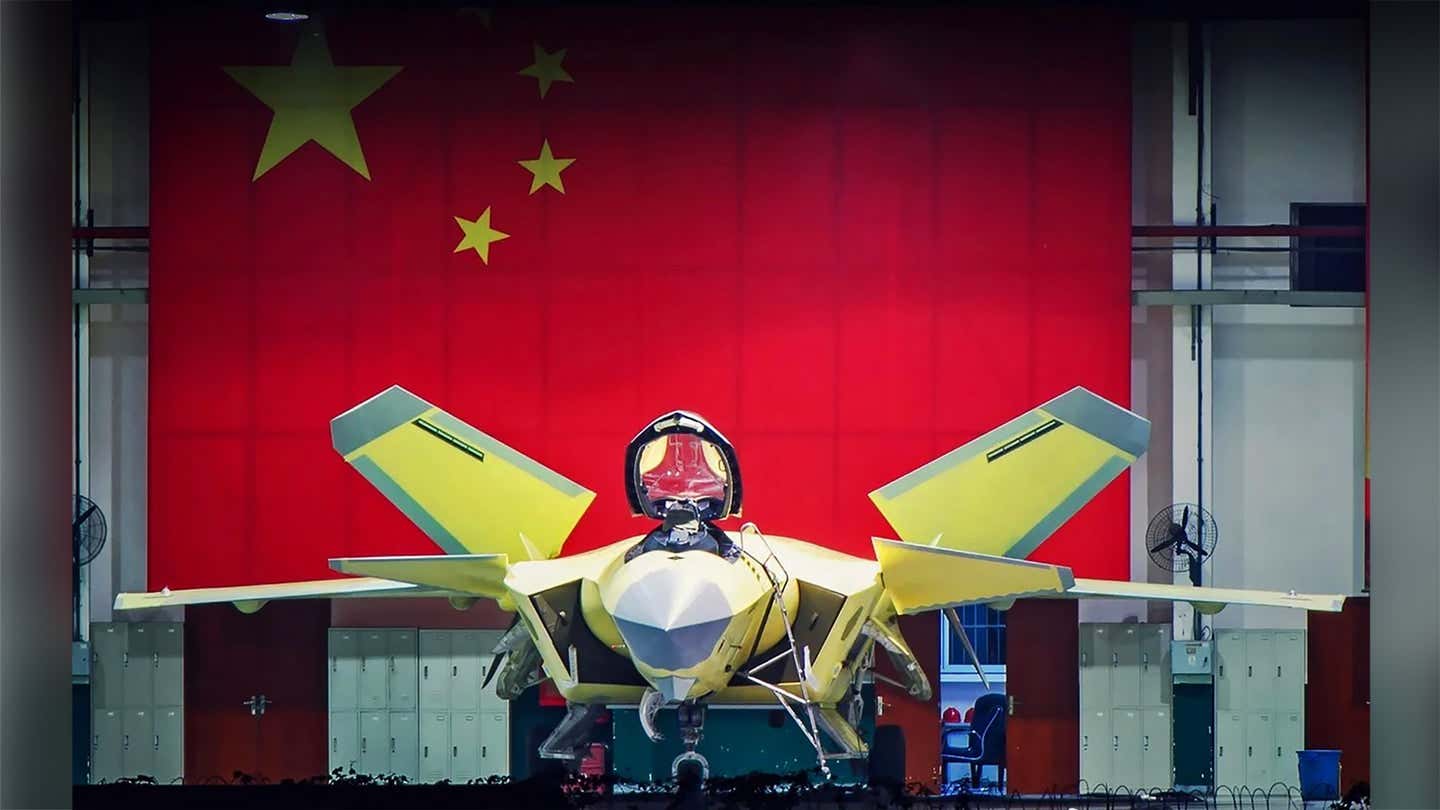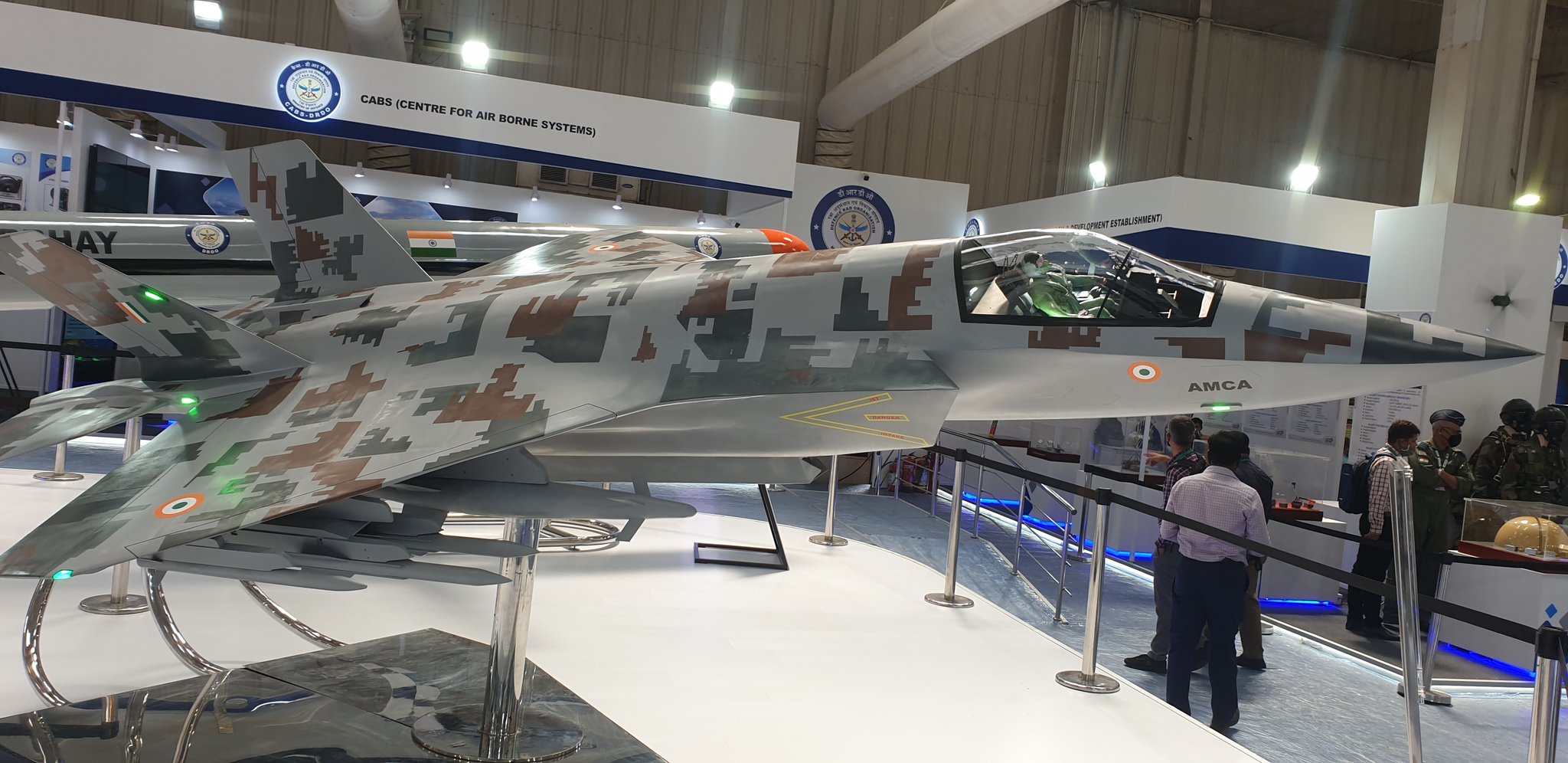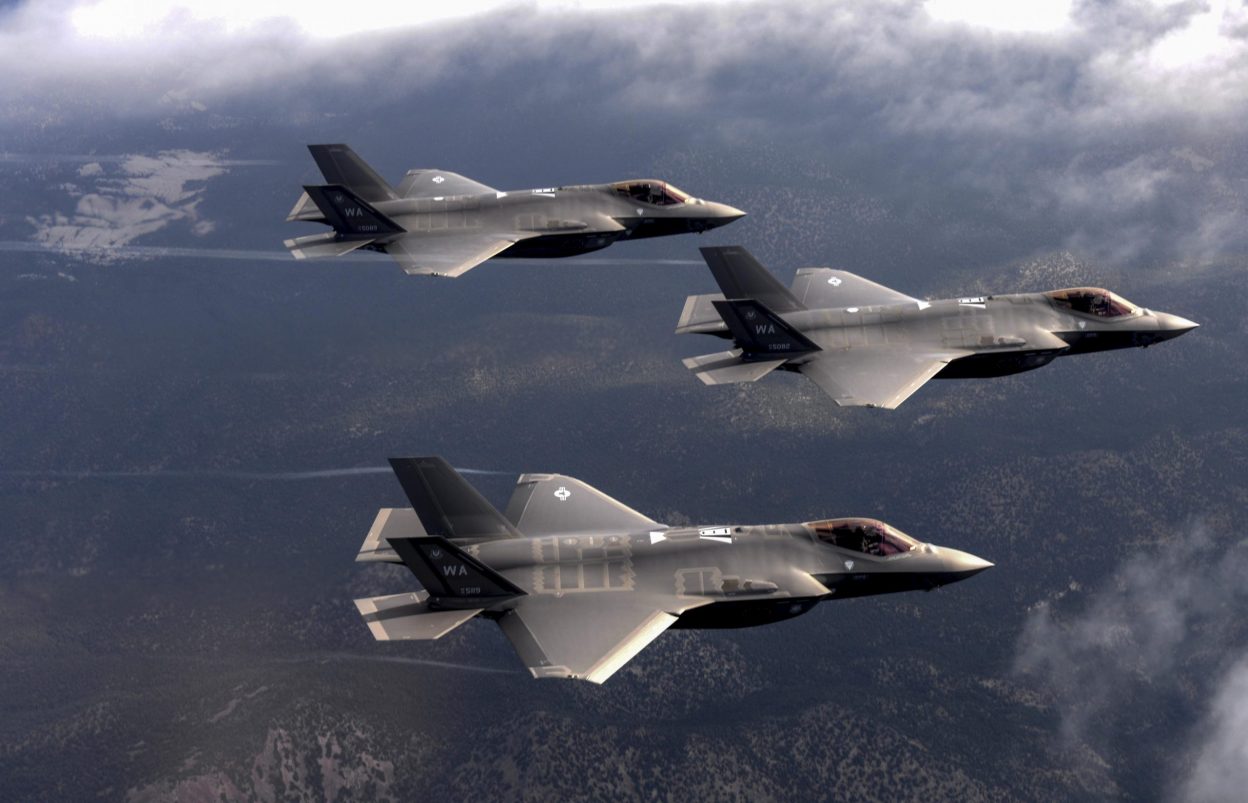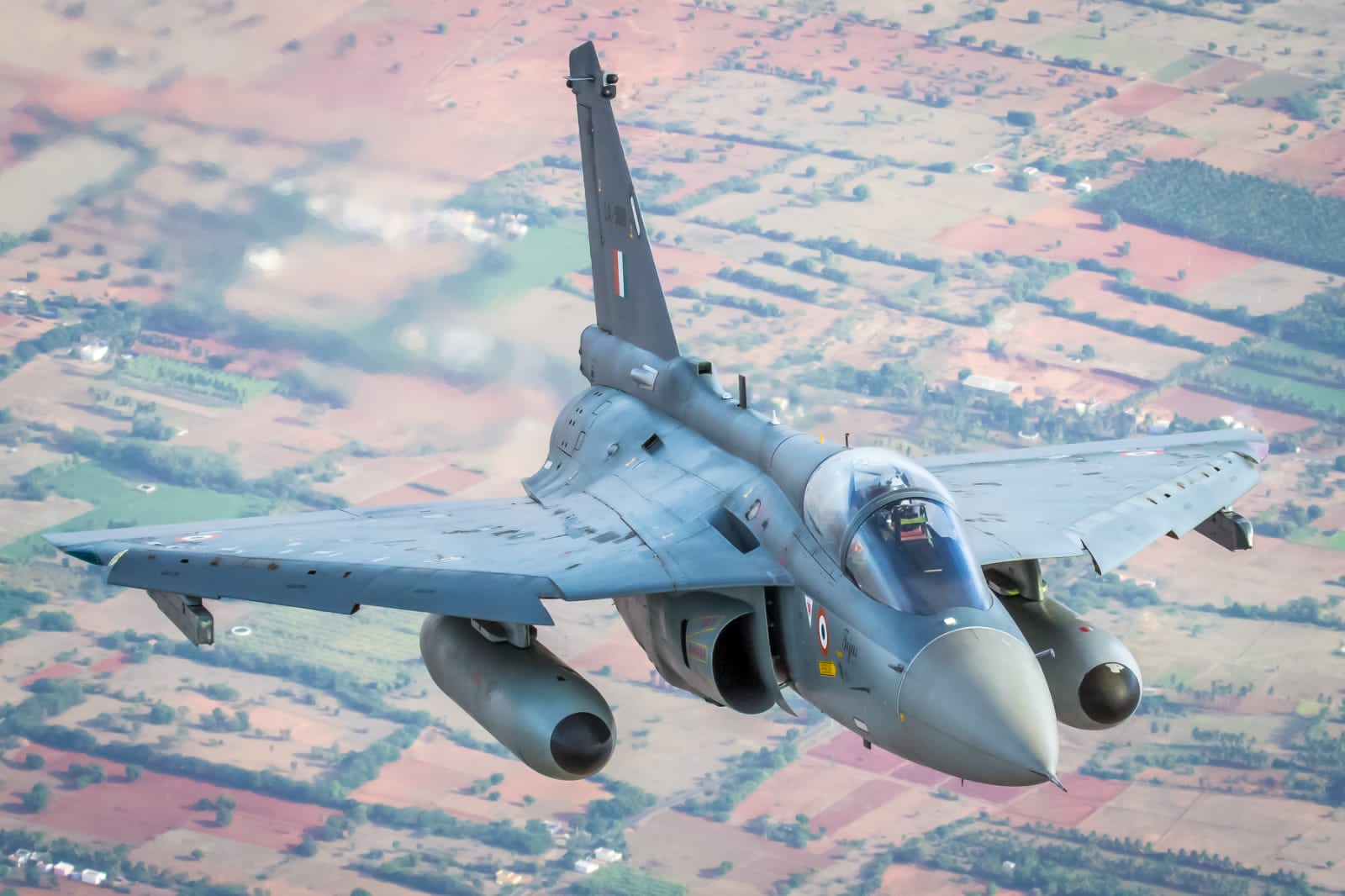The fifth-generation J-20 ‘Mighty Dragon’ is a prized possession of the Chinese PLA Air Force. With India’s prototype of AMCA going into production, will the Chinese stealth fighters have a potential challenger right across the border?
‘Pacifist’ Germany’s Massive $110B Military Budget – What Triggered Berlin To Rethink Its National Security Strategy
The Chengdu J-20 is a single-seat, multi-role stealth fighter that serves as a symbol of China’s growing air power as the plane has been featured prominently in military parades and air shows across the country.
Last year, the J-20 reportedly entered mass production after replacing the Russian AL-31F Turbofan engine with a domestically built WS-10. According to Chinese plans, the current WS-10C engine is further to be replaced by the latest and more advanced WS-15.
Chinese jets have traditionally been powered by Russian-made engines. China has long sought to develop its own engine and gain maximum flexibility, freeing itself from the constraints imposed by Russian engines. The successful integration of WS-15 on J-20s could be the next big breakthrough in self-sufficiency for China.
China’s next-generation turbofan engine, the WS-15, which is to dramatically boost the performance of the J-20 stealth fighter jet, has completed rigorous testing.
Incapable Against J-20 Fighters – US Air Force Says ‘Not Ready For 21st-Century Battle’ With China Due To Outdated AWACS
The WS-15 engine has undergone several tests, according to China Central Television (CCTV), after the WS-10, China’s first independently developed high performance, high thrust turbofan engine with afterburner, was installed on fighter jets such as the J-10, J-11, and J-20 since 2016.
J-20 was equipped Russian-made engine at Airshow China 2018, while J-20 was equipped with domestically made WS-10C engine at Airshow China 2021. Hopefully, J-20 will be equipped with WS-15 engines at Airshow China 2022. ? pic.twitter.com/JcRymSxZgQ
— 彩云香江 (@louischeung_hk) November 24, 2021
The WS-15 has a low bypass ratio and is capable of thrust vector control, according to CCTV. It was developed for fifth-generation heavy and medium fighter jets. The J-20s were supposed to be integrated with the WS-15, but due to test failures, China decided to stick to the WS-10C.
The Chinese military now has a fleet of roughly 50 J-20s. New J-20s will be equipped with the WS-15 engine, said a report of South China Morning Post.
China has been relentlessly working to close the gap with the US Air Force and the upgrades that it is carrying out to the WS-10 engines are aimed at challenging the F-22 Raptors of the US.
This year, China will begin upgrading the J-20 engines by incorporating thrust vectoring technology to get it closer to the performance of the American F-22 Raptor, as previously reported by EurAsian Times.

The J-20 has also often been compared with another fifth-generation fighter Aircraft in the US arsenal, the F-35. China is reportedly on track to increase the production of its J-20 aircraft. This was perhaps in response to the American plan to field more than 2,000 F-35 stealth jets across its three armed services, besides Japan’s multibillion-dollar F-35 acquisition.
China had dispatched J-20s to air bases in Xinjiang following a bloody encounter with Indian forces at Galwan in eastern Ladakh in June 2020.
India’s AMCA Warplane
India’s Defence Research and Development Organisation (DRDO) recently announced the proverbial “metal cutting” for the first prototype of the country’s next-generation fighter jet, the Advanced Medium Combat Aircraft.
The maiden flight of the AMCA is scheduled for 2024-25, with serial production beginning in 2030, EurAsian Times had reported.
Based on the design by ADA & DRDO, the fabrication of Leading edge of AMCA initiated at HAL with special material for 5th gen design. The unit will undergo structural & other testing before putting it on the first prototype. An imp milestone for AMCA. @PMOIndia @DefenceMinIndia
— DRDO (@DRDO_India) March 9, 2022
According to reports, the Indian Air Force has committed to 40 AMCA Mk-1 fighters, as well as at least 100 Mk-2 variants and some unmanned aircraft. Like the Chinese J-20, the stealthy AMCA is also going to have ‘super cruise’ capabilities.
With AMCA, India will enter the exclusive club of countries with fifth-generation stealth warplanes. So far, the US (F-35 and F-22 Raptors), Russia (Su-57), and China (J-20) have built such fighters.

Although it is unknown how the AMCA, which is yet to be manufactured, will exactly compete with the Chinese J-20,
According to Aeronautical Development Agency chief Girish Deodhare, the AMCA will be available in stealth and non-stealth variants and will be produced in two stages: an AMCA MK1 with an existing GE414 afterburning turbofan engine that powers the LCA Tejas, and an AMCA Mk2 with a new, more powerful engine that will be developed in collaboration with a foreign player.
$700 million fighter jet engine deal with US: India to purchase 100 GE engines for its Tejas LCA Mk1A jets.
Quick negotiations have ensured the project remains on the right timeline.
Plans for an indigenous engine on the future AMCA.
https://t.co/1TSO6PfnQ3 pic.twitter.com/92YdJJ2UKp
— Manu Pubby (@manupubby) July 14, 2021
India and France are now reportedly close to reaching an agreement for the joint development of a 125KN engine that will power AMCA. The deal is expected to be signed in the near future.
Some experts have speculated that the Indian Air Force would model its futuristic aircraft AMCA on the American F-35. If true, this could ensure greater interoperability between the Indian and US Air Forces and could come as a massive headache for the PLAAF.

AMCA will be a single-seat all-weather swing-role stealth fighter jet with twin turbofan engines. It will be capable of a wide range of operations, including air superiority, ground strikes, enemy air defense suppression, and electronic warfare. China is reportedly working on a two-seat variant of the J-20.
AMCA is designed for super-cruise capability and a reduced radar cross-section. Both these features that the AMCA strives to include are already present in the J-20 Mighty Dragon. Further, J-20 took its first flight a decade ago and was inducted in 2017 whereas the AMCA is yet to see the light of the day.
The 20-ton AMCA fighter would be able to carry one-and-a-half tons of armament in internal weapon bays in its stealth mode. The non-stealth variant would carry weapons, targeting and observation pods, as well as fuel tanks on external pylons under the wings and fuselage.
Further, like the indigenous LCA Tejas that wields Python missiles, Astra BVRAAM, Vympel R-77, and R-73 air-to-air missiles, the Kh-59ME TV guided stand-off missile and the Kh-59MK laser-guided stand-off missiles, the AMCA could be integrated with similar weapons. Just as India sought HAMMER missiles for LCA, advanced missiles could also be imported for the AMCA.

Indian media reported that the AMCA could be equipped with Directed Energy Weapons (DEWs) just as China’s J-20 is believed to get the DEWs, as previously revealed by a Global Times report.
The AMCA’s avionics suite will comprise modern radars and electronic warfare capabilities with “sixth-generation characteristics.” The plane will have a very low radar cross-section for better stealth, as well as AI-based technologies and an upgraded cockpit display with a touch screen interface.
All these specifications are expected to put the aircraft on par with the J-20. According to reports, the AMCA will also incorporate thrust-vectoring engines. The J-20 is on course to upgrade its WS-10 engines with thrust vectoring technology while the WS-15 already possesses this technology aimed at achieving better maneuverability.
Both the Chinese J-20 and Indian AMCA have air superiority as their primary objectives. While the Chinese Air Force developed its fifth-generation fighter years ago, the addition of a similar aircraft to IAF’s arsenal could create a balance of power between the two adversaries that are locked in a prolonged border standoff.
- Contact the author at sakshi.tiwari9555@gmail.com
- Follow EurAsian Times on Google News




